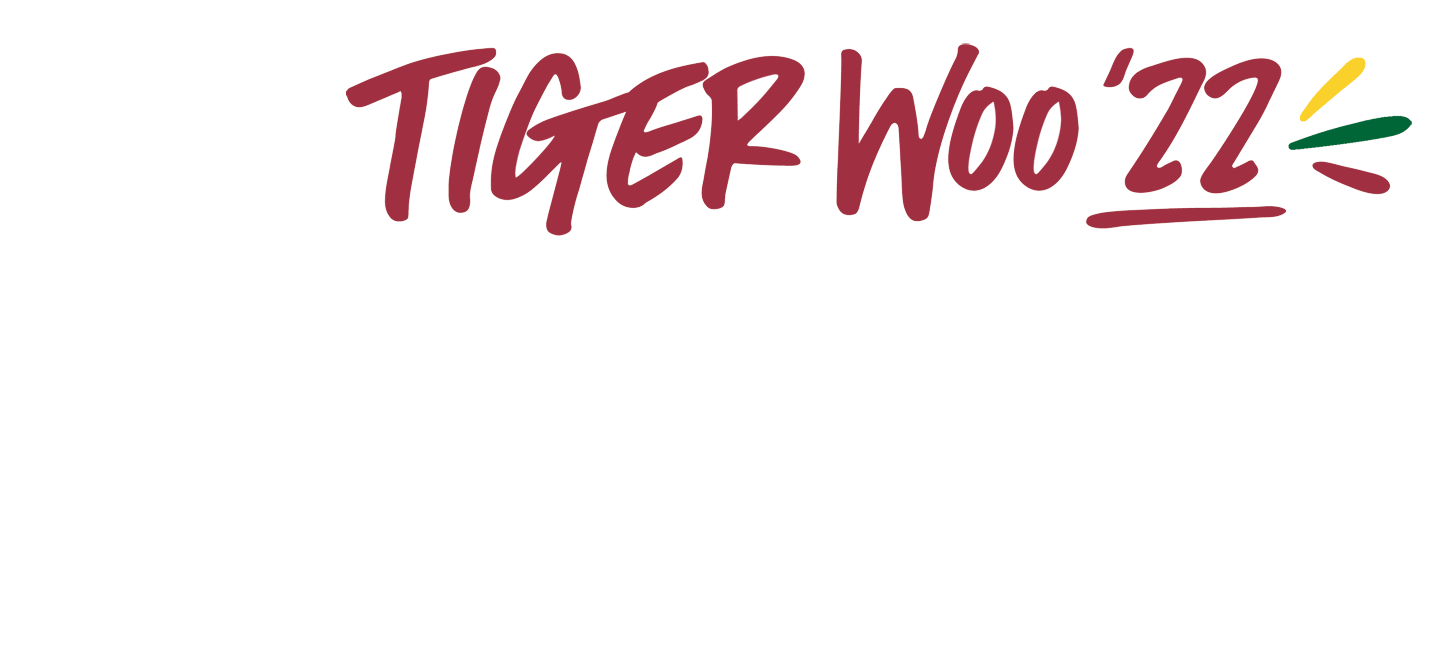

So...what does Tiger Woo mean?!
Your curiosity shall be rewarded! This is your first step towards uncovering the meaning behind Tiger Woo...
(The second step? Joining us at Trinity! That's where you'll really come to understand what this all means!)
TLDR version
'Tiger Woo' is the catchcry of Trinity College. When you move to Trinity, you'll hear it at matches, carnivals – even in the dining hall!
'Tiger Woo' represents lots of things: our community, our fierce spirit, the bond our students share.
It also represents our history. You see, 'Tiger Woo' (or some iteration) has been around for a long, long time. Almost as long as Trinity College itself! (For a full history lesson, see below). So it doesn't matter if you were at Trinity in the '70s, the '90s, or even the 2020s: after leaving Trinity, when you see or hear 'Tiger Woo!', you'll feel an instant connection to a community that's been building for well over a century.
Deep dive version
According to Trinity College curator/historian mastermind Dr Ben Thomas, 'Tiger Woo' possibly dates back to 1892!
Context – why 'tiger'?
Back in the good ol' 1800s, the term 'tiger' was more commonly known in the American expression of rejoicing at the end of a rallying cry, ‘...and a tiger!'
The expression received some attention in the Australian press in 1916 during the midst of the First World War, because of it being used by British PM Lloyd George in reference to a Canadian Division, then based in England. An explanation was subsequently given in the media, to bring people up to speed. They described it there as:
‘This is a long-drawn-out screech which follows the cheers ... then is sure to be heard the insistent call after the cheering, “And a tiger!”'
Its use at Trinity according to Dr Ben
There's no concrete origin story for 'Tiger Woo' (like all good folklore).
The earliest use that can be found of the expression within a Trinity context is Warden Alexander Leeper’s adoption of the phrase in October 1892, where – seemingly at a dinner party of Melbourne notables, and shortly after the opening of the recently built women’s hostel, Janet Clark Building – he toasts ‘Success to Trinity College Hostel, with three cheers and a tiger for the Irish stew.' (Leeper was Irish, so having good Irish stew was clearly important!)
Following this triumphant exclamation, it's unclear as to when Tiger Woo became part of the everyday lexicon at Trinity (or at what point the 'woo' was added).
In March 1979, the college newsletter wrote: ‘“Give us a ‘T’, give us an ‘R’ …” At least two things are held in common by all generations – both song and war cry finish with a resounding 'Tiger Woo!’.
So, clearly it was well established in College, over several generations, almost a century after its very first usage!
Alumni and staff of the 1960s recall it being in use during their time, but are unaware of the origins.
The 'tiger' reference is definitely present in the original college song, however. It was published in the inaugural edition of the Fleur de Lys (our college magazine) in 1907, but the song itself was already about five years old by this point, written by the Revd L. Arnold. The use is in one of the closing verses:
She’s the finest place on record since creation first began,
She’s our dear old Alma Mater and we love her to a man,
So give a mighty “tiger” just the loudest that you can,
A “tiger” for the dark green flag and Trinity.
So, there’s the potted history. We have a 'tiger' associated with Trinity at least as early as 1902, and likely an adaption used by the Warden a decade earlier in 1892; and all of that part of the larger expression of celebration, ‘Three cheers and a Tiger!’ ... woo!
Sincerest thanks to Trinity College Rusden Curator, Cultural Collections Dr Benjamin Thomas & Trinity College Theological School registrar Dr Peter Campbell for their super sleuthing skills!
